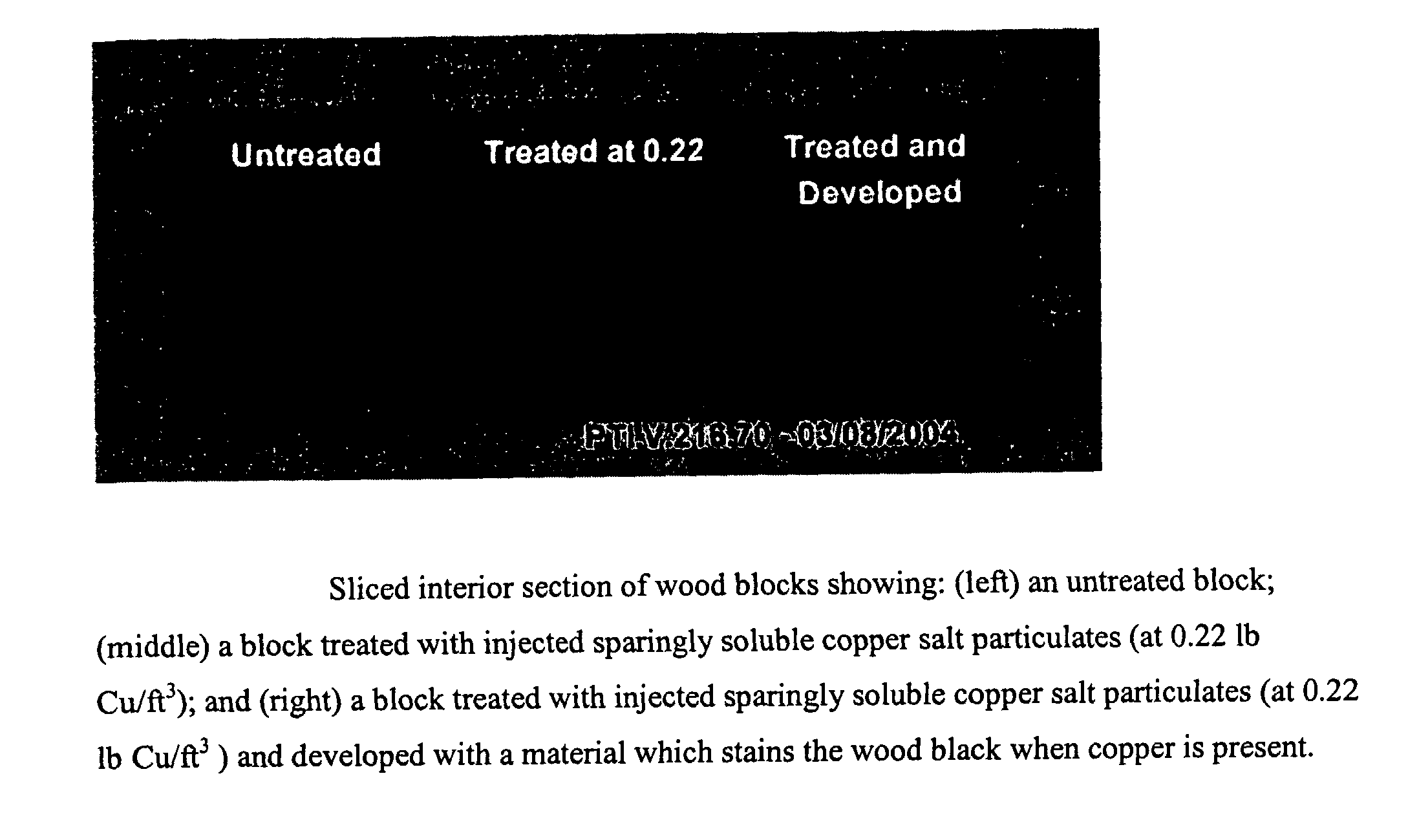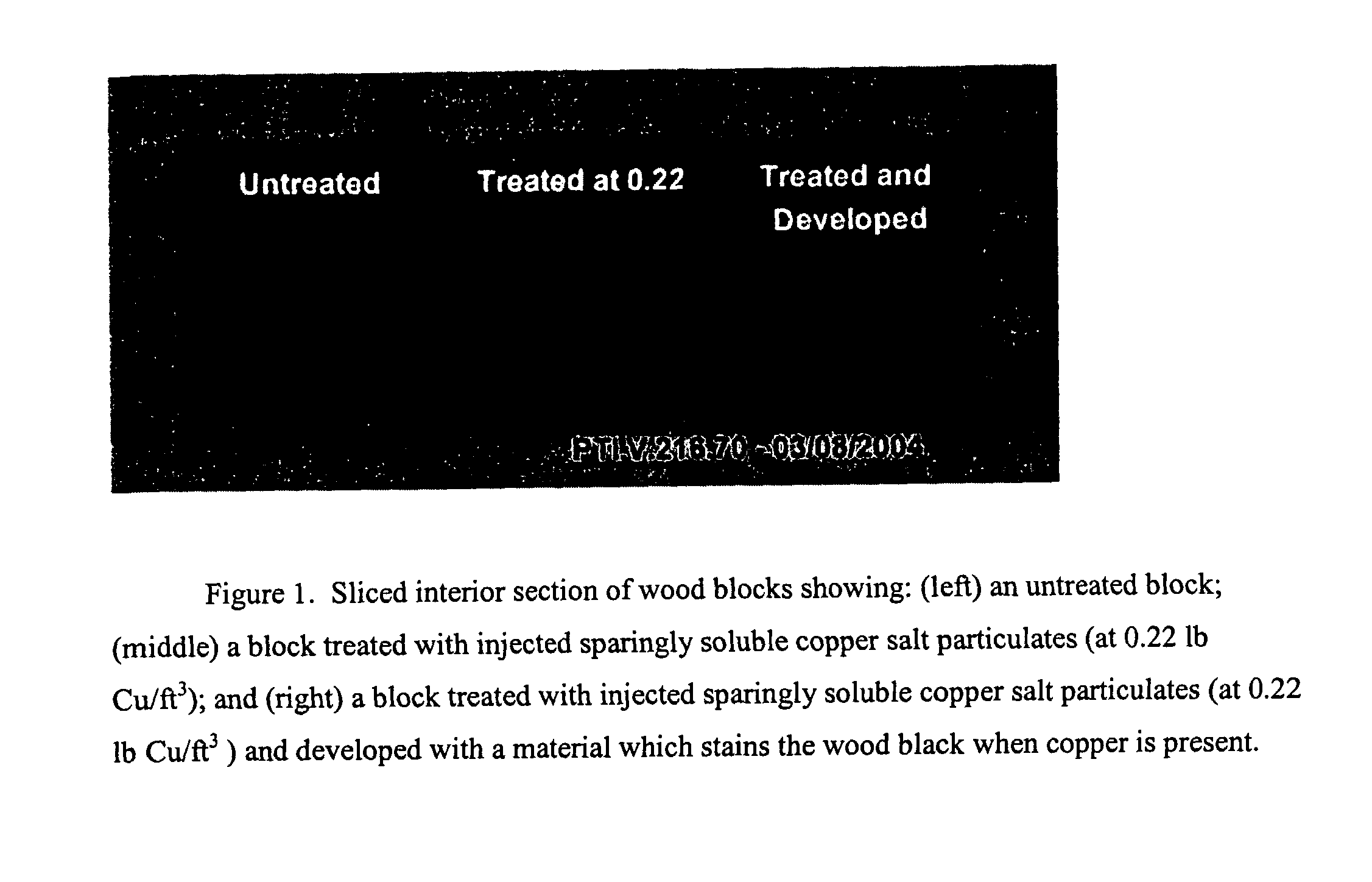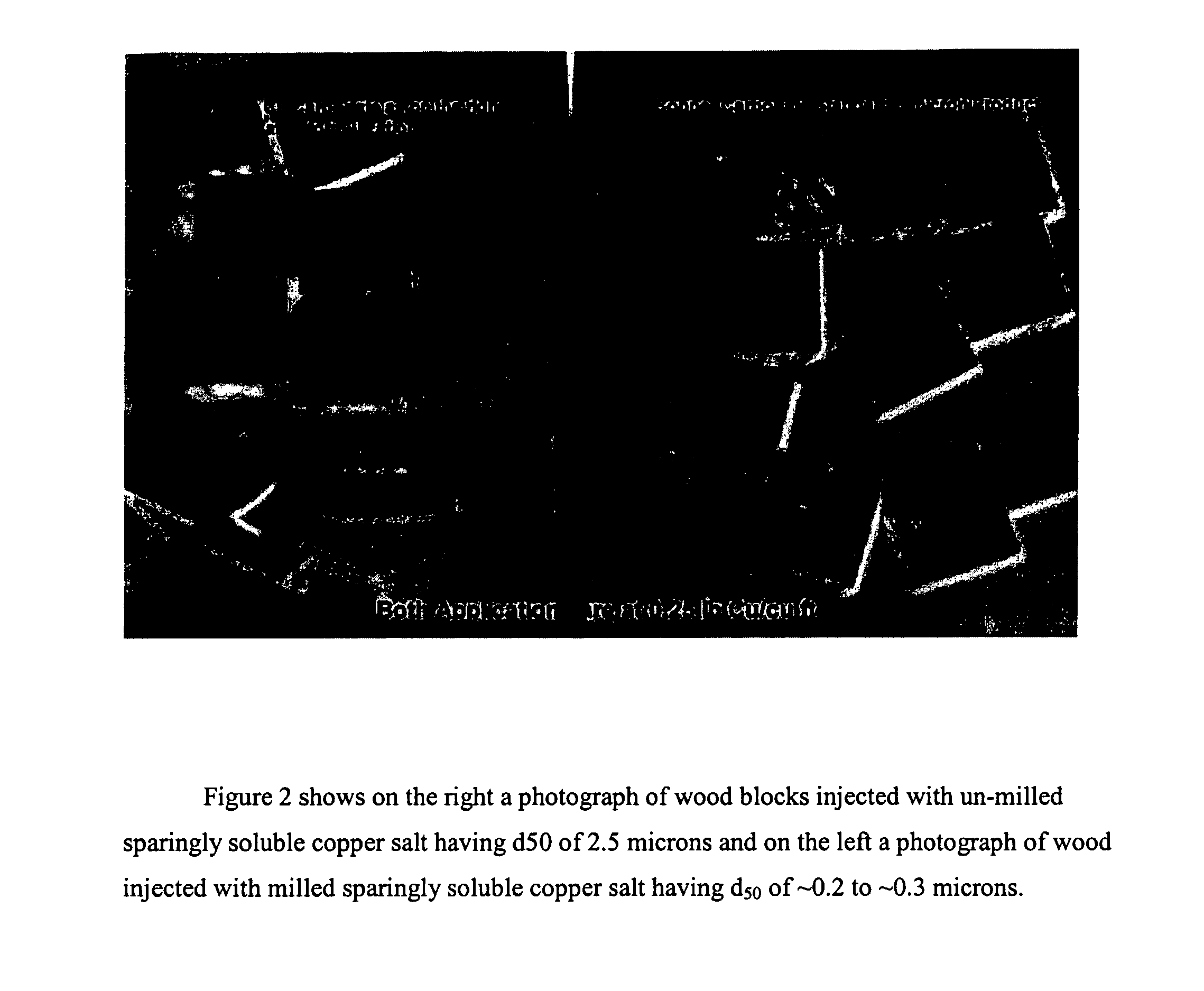Composition for wood treatment comprising an injectable aqueous wood preservative slurry having sparingly-soluble biocidal particles and pigments
a wood preservative and aqueous technology, applied in the field of wood preservatives, to achieve the effect of preventing agglomeration and better stabilizing the slurry
- Summary
- Abstract
- Description
- Claims
- Application Information
AI Technical Summary
Benefits of technology
Problems solved by technology
Method used
Image
Examples
example 2
[0155]Similar conditions were used in the experiments described in Example 2 as were used in comparative experiment 1. In this Example, the preferred organic biocides Chlorothalonil and Tebuconazole were milled. The milling media comprised cerium-doped zirconium oxide beads or yttrium-doped zirconium oxide beads, having a particle diameter of 0.4-0.5 mm or 0.3 mm. The density of the doped zirconium oxides is >6.0 g / cm3, compared to the ˜3.8 g / cm3 density of zirconium silicate beads used in comparative example 1. Additionally, the biocidal efficacy of milled chlorothalonil was compared to the biocidal efficacy of un-milled Chlorothalonil.
example 2-a
[0156]A first formulation, containing 20.4% chlorothalonil, 5% Galoryl™ DT-120 brand naphthalene sulfonate formaldehyde condensation product, 2% Morwet™ EFW, 3% Pluronic™ F-108 block copolymer (dispersant), and 69.2% water by weight, at a pH of about 7.3, was wet ball milled in a CB Mills, model# L-3-J mill with 0.4-0.5 mm doped zirconia. The total batch weight was about 600 g. The results are shown in Table 2 below.
TABLE 2Wet ball milling Chlorothalonil with 0.4-0.5 mm zirconiaParticle Size Data -Volume % WithMillingd50Diameter Greater ThanTime Mins.μm10 μm5 μm2 μm1 μm0.4 μm03.448307792——900.31333322—2400.210123 351
[0157]The above-described composition does not have a particle size distribution which will result in a commercially acceptable injectable wood composition, even after 240 minutes of milling. The composition can be further treated with for example a centrifugal finishing technique which effectively removes all particles with an effective diameter greater than 2 microns t...
example 2-b
[0161]The next test was performed with a composition containing 20.8% tebuconazole, 3% Pluronic™ P-104 brand block copolymer, 1.5% Morwet™ D-425 brand naphthalene sulfonate, 0.1% Drewplus™ L-768 brand dimethylpolysiloxane (30%), and 74.6% water by weight. This composition was wet ball milled in a CB Mills Vertical Mill Model L-1 with 0.3 mm yttrium-doped zirconia. Prior to milling, the d50 of the tebuconazole was about 27 microns. The results are shown in Table 3 below.
TABLE 3Wet ball milling Tebuconazole with 0.3 mm zirconiaMillingParticle Size Data - VolumeTime% With DiameterMins.>50 μm25-50 μm10-25 μm1-10 μm0.2-1 μm026.627.242.24——150003.64.220.771.5
[0162]The above-described composition does not have a particle size distribution which will result in a commercially acceptable injectable wood composition. The composition can be further treated with for example a centrifugal finishing technique which effectively removes all particles with an effective diameter greater than 2 microns...
PUM
| Property | Measurement | Unit |
|---|---|---|
| Length | aaaaa | aaaaa |
| Length | aaaaa | aaaaa |
| Fraction | aaaaa | aaaaa |
Abstract
Description
Claims
Application Information
 Login to View More
Login to View More - R&D
- Intellectual Property
- Life Sciences
- Materials
- Tech Scout
- Unparalleled Data Quality
- Higher Quality Content
- 60% Fewer Hallucinations
Browse by: Latest US Patents, China's latest patents, Technical Efficacy Thesaurus, Application Domain, Technology Topic, Popular Technical Reports.
© 2025 PatSnap. All rights reserved.Legal|Privacy policy|Modern Slavery Act Transparency Statement|Sitemap|About US| Contact US: help@patsnap.com



